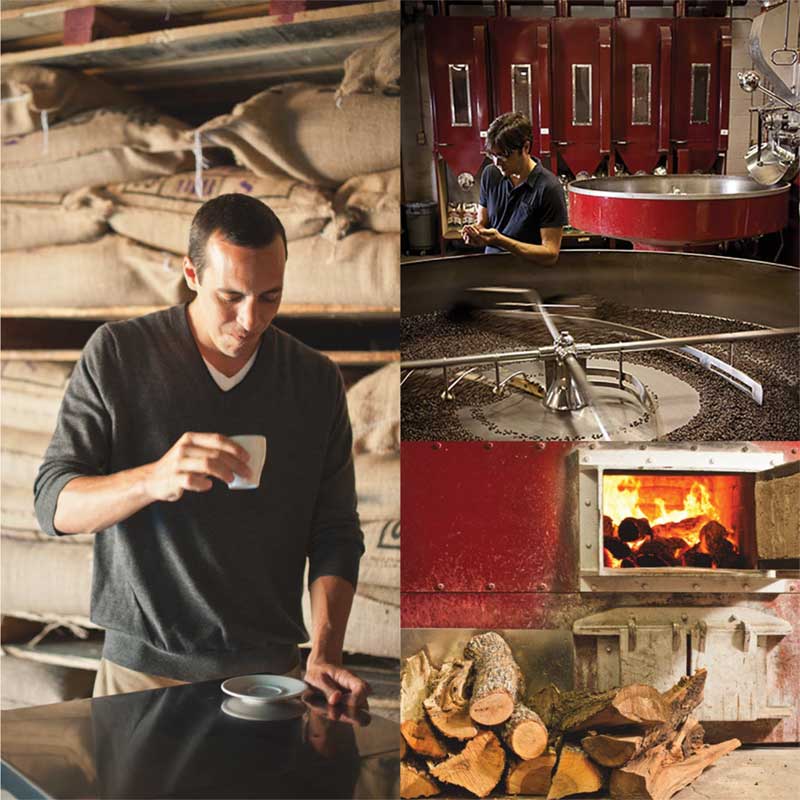Oak Wood Roasting Process
We are the only macro roaster in the United States to roast coffee beans exclusively over a fire fueled by wood. The more common source of fuel is gas.
The differences are not what you might expect. Unlike cooking with a wood oven or grill, where the smoke from the wood imparts a flavor to the final product, the difference between wood and conventional roasting lies in the quality of the heat delivered to the beans.
Heat derived from wood has higher moisture content and is better suited for slow roasting. The natural humidity within the wood seems to envelop the beans during the roasting process, preserving more of the oils within. Meanwhile, the slow roasting aspect ensures the coffee is lower in acidity and higher in body. The result is most apparent in our espresso, yielding more crema, fuller flavor, and a smoother finish.
The unique advantages of wood roasting do not come without challenges. For an inexperienced roaster, the use of such an unpredictable fuel can make consistency between roasts difficult. Luckily, we have more than 45 years of wood roasting under our belt, giving us the expertise and intuition necessary to maintain control of the roasting process with a very high level of consistency.
We begin by selecting well seasoned oak wood from responsible Northern California suppliers. We then utilize thermocouple data collected at key locations on the roaster along with VFD motor control, which allows us to make fan and drum speed adjustments during the roasting process. Wood smoke is abated by high powered afterburners in compliance with local air quality standards.
Wood roasting is a delicate blend art and science, where human experience and old world methods meet the latest technological advances in roasting. We hope you will enjoy our distinctive oak wood roasted coffee experience.

